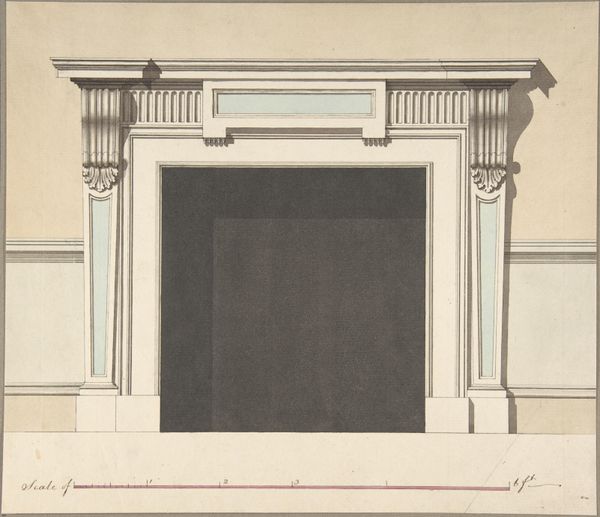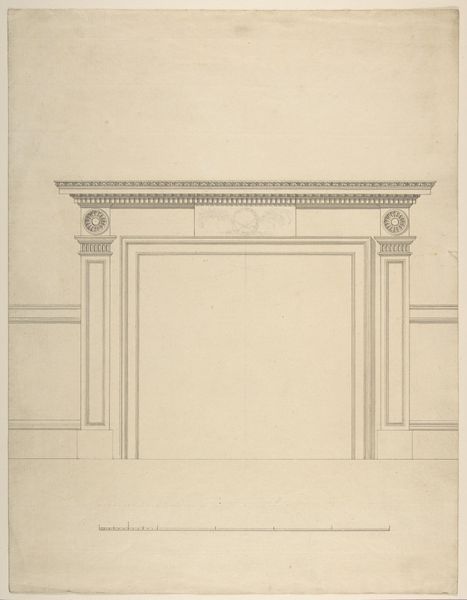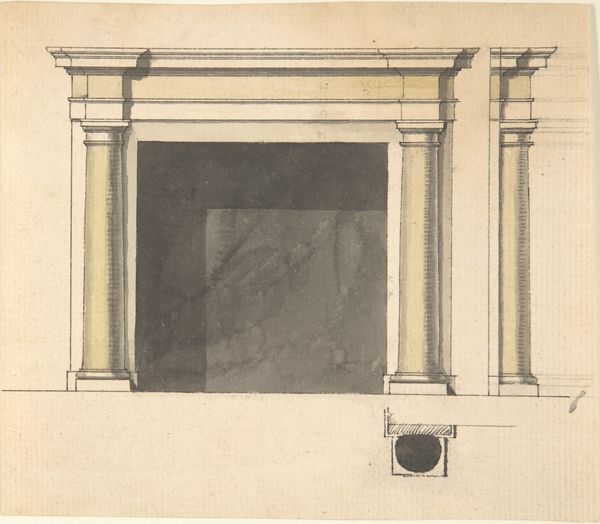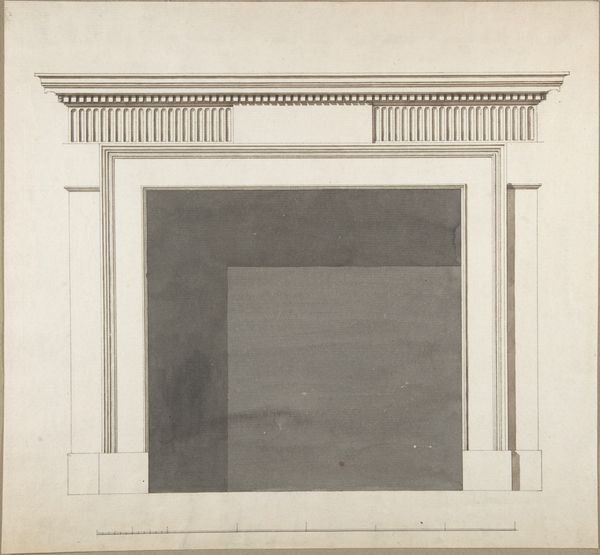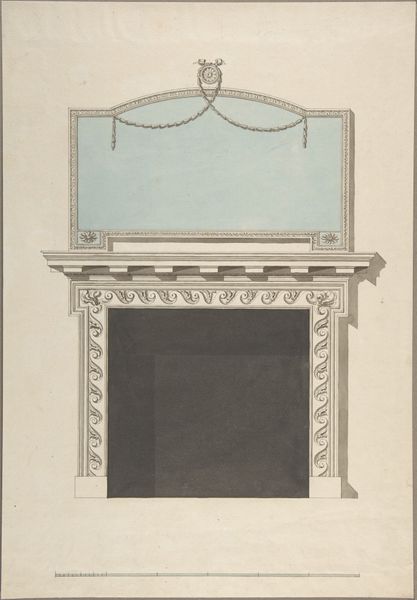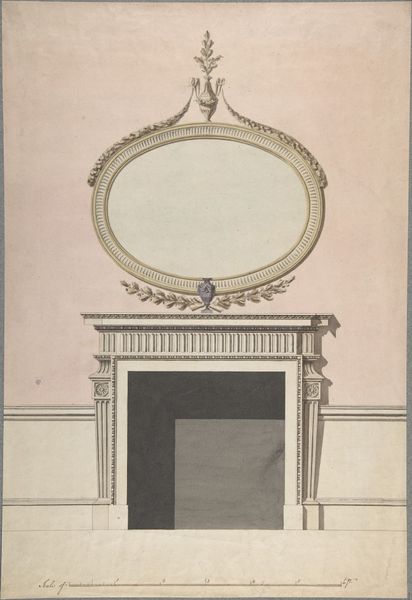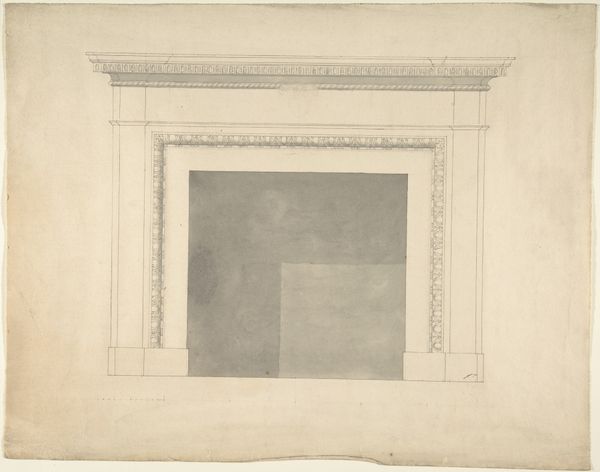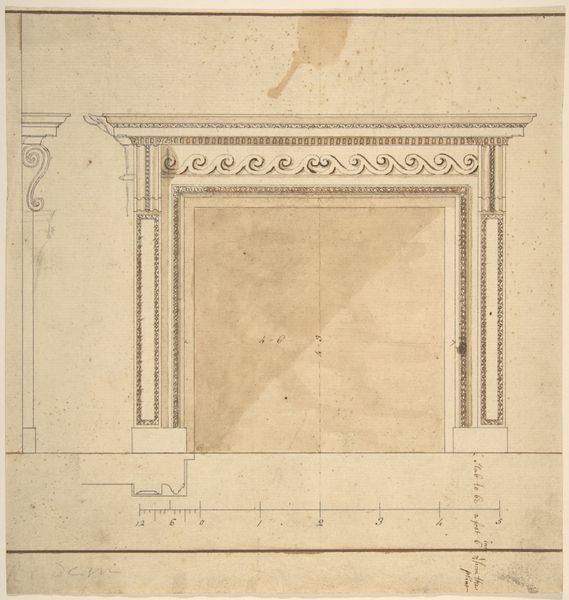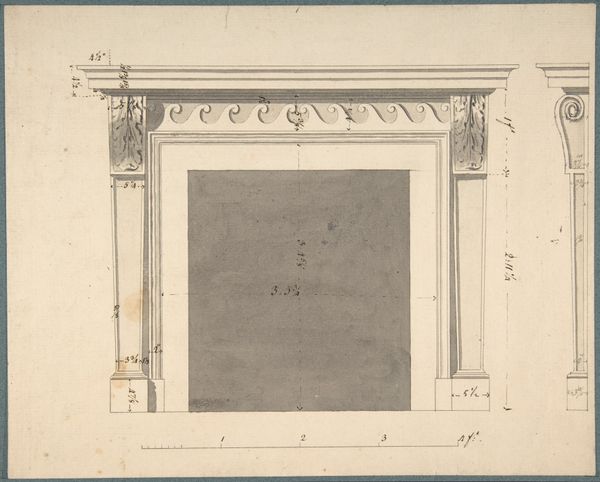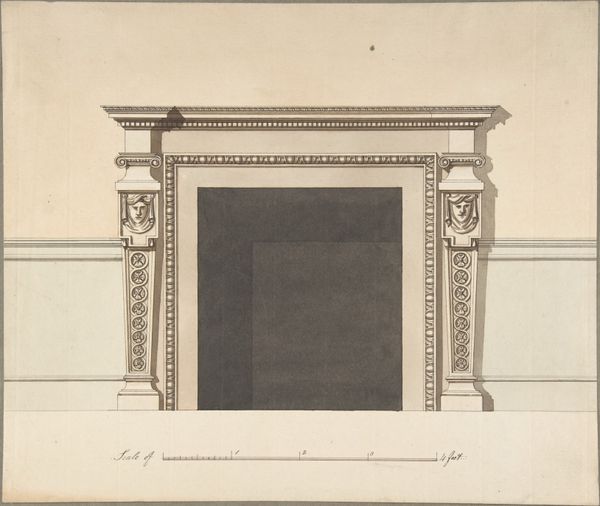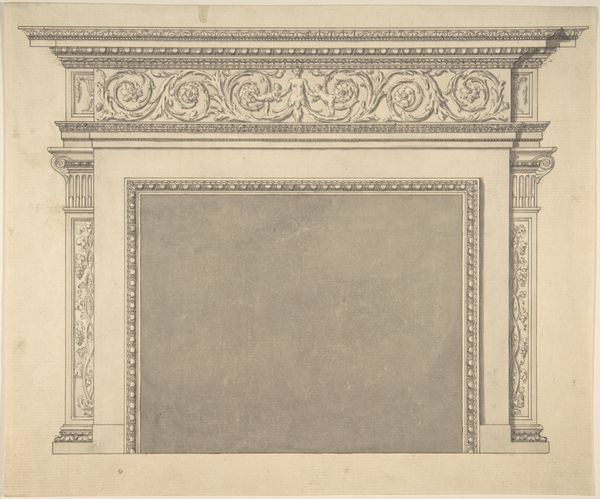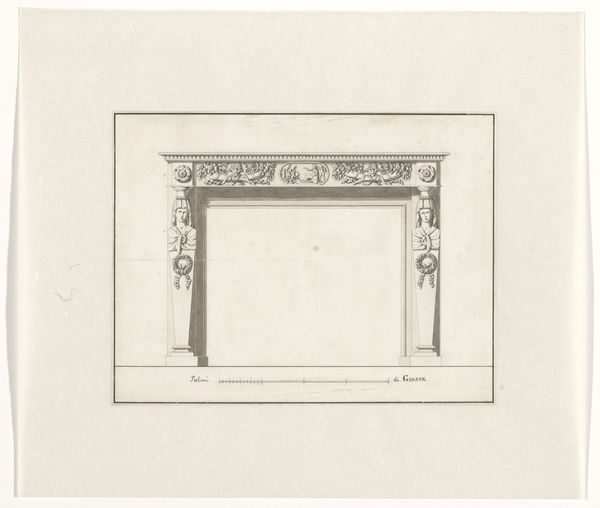
drawing, print, paper, pencil, architecture
#
drawing
#
neoclacissism
# print
#
paper
#
form
#
geometric
#
pencil
#
line
#
academic-art
#
architecture
Dimensions: sheet: 12 x 10 1/4 in. (30.5 x 26 cm)
Copyright: Public Domain
Curator: The work before us, "Design for a Chimneypiece" attributed to John Yenn and dating from around 1770 to 1821, provides an intriguing example of Neoclassical architectural drawing. It’s executed in pencil, print and ink on paper, and now resides at the Metropolitan Museum of Art. Editor: It’s stark, isn't it? Utilitarian, but also monumental in a strange way. The flat expanses of the inner void give it a really modern feel. Curator: Exactly! Look closely at the geometric forms that govern the overall structure and details. This reflects the Enlightenment’s focus on reason and order, seen also in its revival of classical Greek and Roman motifs. Notice the frieze—a rhythmic arrangement of rosettes contained in squares. Editor: Those rosettes do stand out. They almost feel like a conscious attempt to soften the severe geometry with echoes of nature. Flowers, though stylized. The hearth as a central point—the emotional heart of the home represented here, maybe even warmth and safety, but in a controlled, very defined way. Curator: Certainly, and this controlled aesthetic speaks volumes about the social and political context of the late 18th century. It signals a move toward perceived order and stability at a time when the aristocratic order was very much under threat. Consider how the precise rendering signifies power, taste, and even a statement about the dominance of the intellectual over the emotional. Editor: So, the coldness isn't a bug, it's a feature? A calculated decision, rather than simply aesthetic? And I suppose the monumentality hints at the idea of legacy, an attempt to root that sense of dominance in time, embedding these symbols into the foundations of daily life. Curator: Precisely. This isn't simply a drawing of a fireplace; it’s a manifestation of an ideological stance expressed in geometric symbolism. Editor: Looking at it again, I see it less as a design for a fireplace and more as a portrait of a period's ambitions. Thanks, I wouldn’t have come to that interpretation without this conversation. Curator: Indeed, it shows how architecture and design can reflect underlying narratives of authority, class, and the shifting sands of societal structure. It certainly makes me question what ideological stances we embed in the architecture of today!
Comments
No comments
Be the first to comment and join the conversation on the ultimate creative platform.
